Ukadiche Modak is a traditional Maharashtrian sweet dumpling made during the festival of Ganesh Chaturthi. These modaks are made with rice flour dough, filled with a sweet mixture of coconut and jaggery, and steamed to perfection, resulting in a delightful treat with a soft outer covering and a sweet, aromatic interior.
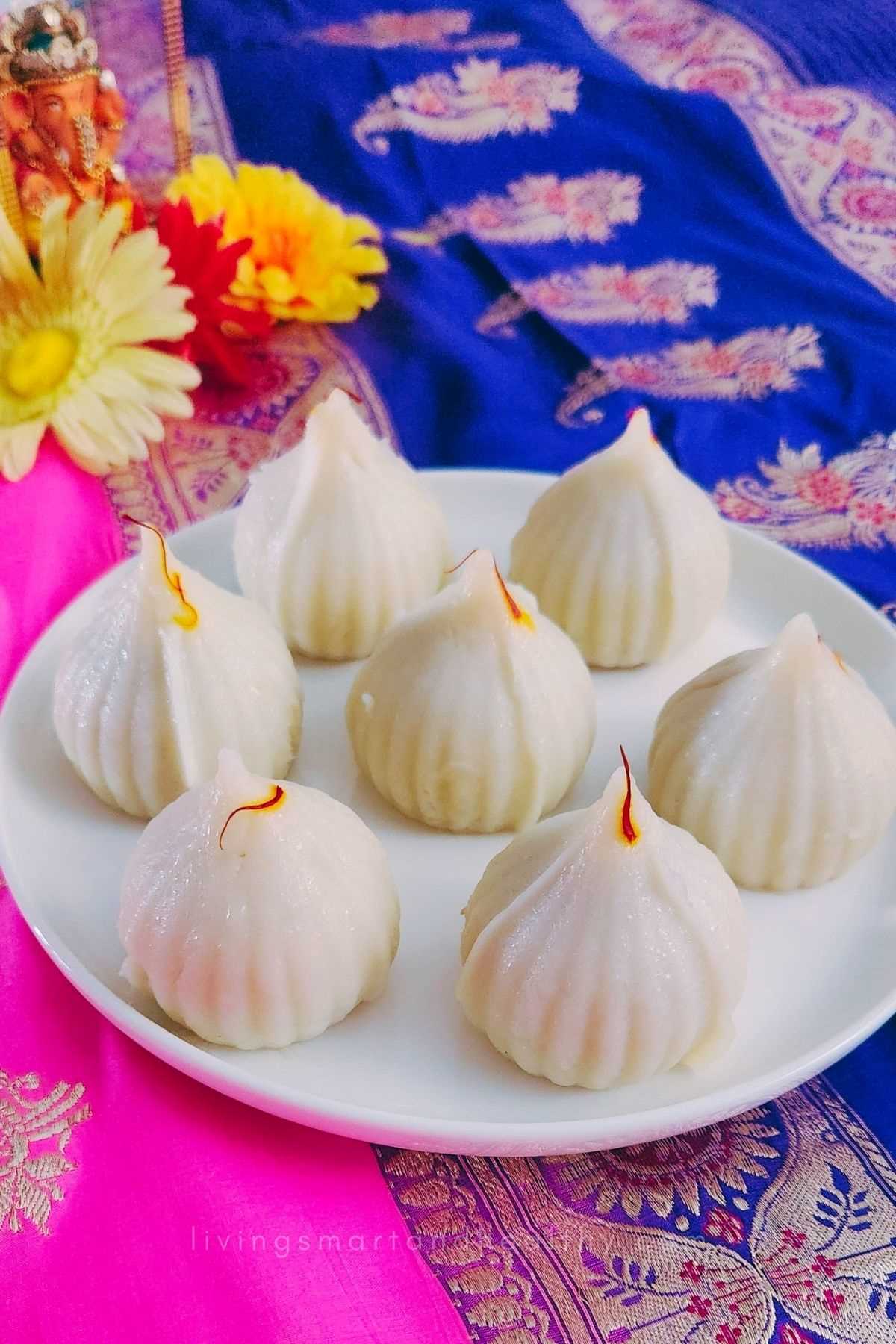
Last year I received an invitation from my friend Sunita to join her for Ganesh Chaturthi at her home, where she introduced me to a traditional Indian sweet called "modak" that I had never tried. Eager to embrace new flavors and cultural experiences, I enthusiastically accepted her invitation.
Sunita adorned her house with colorful decorations and an intricately crafted idol of Lord Ganesha, the deity of wisdom and prosperity. The air was filled with the sweet aroma of incense, and they performed traditional rituals with great devotion.
The family gathered around to offer prayers and devotional songs, creating a warm and joyous atmosphere. They prepared a delectable feast, including a variety of sweets, with the centerpiece being the beautifully shaped modaks, symbolizing Lord Ganesha's favorite treat.
Finally, it was time to taste the modak. Its pyramid-like form looked beautiful, and the sweet aroma was irresistible. As I took my first bite, a burst of flavors overwhelmed my senses.
The outer layer was soft, slightly chewy, and subtly sweet, while the filling inside was a delightful blend of coconut, jaggery, and cardamom. It was like nothing I had ever tasted before—sweet, aromatic, and incredibly satisfying.
As I savored each bite of the modak, I realized that food has a unique way of bringing people together, transcending cultural boundaries, and creating lasting memories.
My first taste of modak was not just a culinary experience but a delightful journey into the heart of tradition and friendship, one I will always cherish.
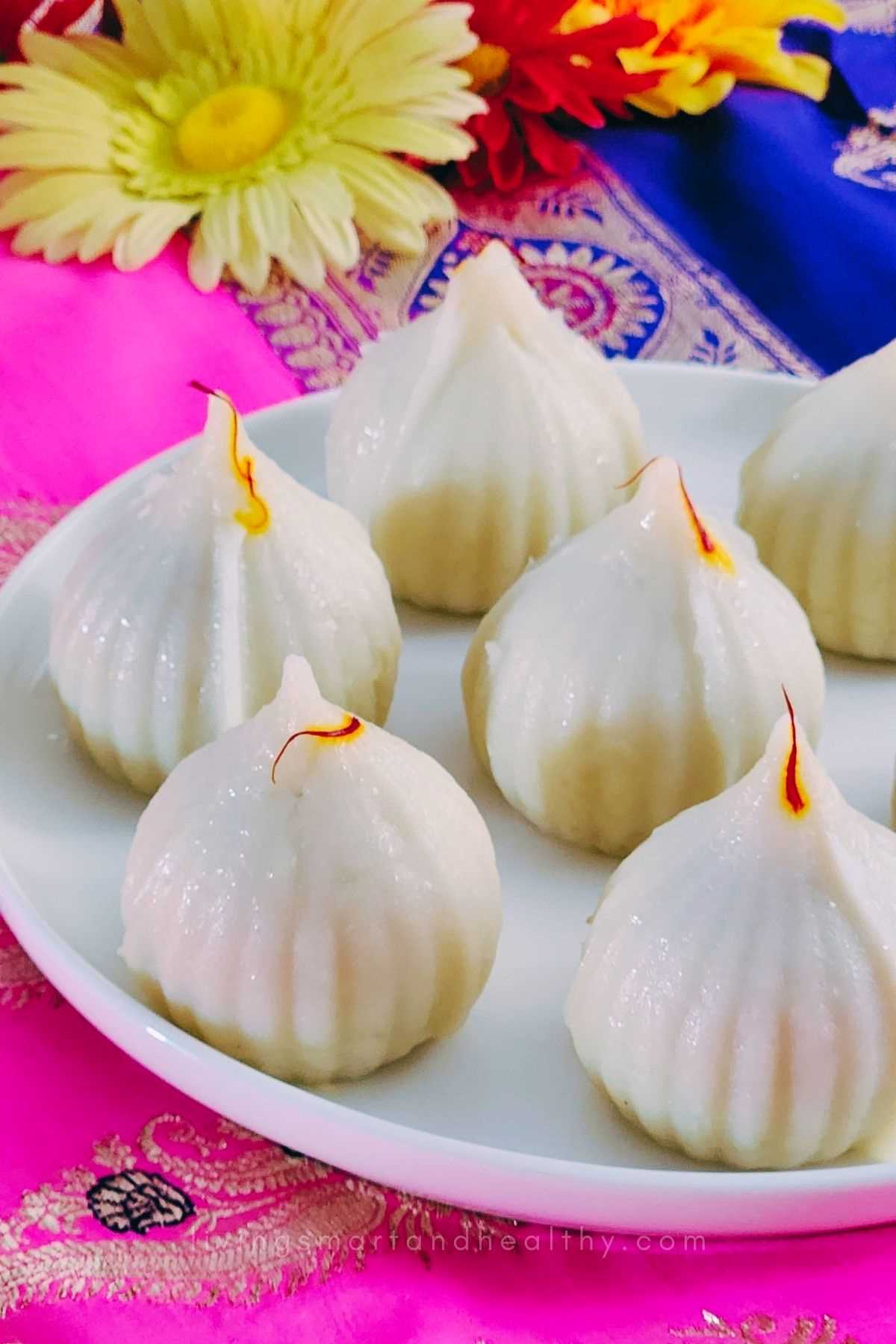
Jump to:
What Is Ukadiche Modak
Ukadiche Modak is a popular Indian sweet dish that is especially associated with the Hindu festival of Ganesh Chaturthi, which celebrates the birth of Lord Ganesha, the deity of wisdom and prosperity.
Modak is considered Lord Ganesha's favorite sweet, and it is often offered to him as a part of the festival rituals.
Modak is typically made from rice flour or wheat flour dough, filled with a sweet and flavorful mixture made from grated coconut, jaggery (unrefined cane sugar), and sometimes cardamom powder and other aromatic spices.
The dough is rolled out into small circles, the filling is placed in the center, and then the dough is folded and shaped into a dumpling or a pyramid or pumpkin shape. The dumplings are then steamed or fried until they are cooked and turn golden brown.
Modak is not only delicious but also holds great significance in Indian culture, particularly during Ganesh Chaturthi. It is often distributed as prasad (a religious offering) during the festival and shared among family and friends.
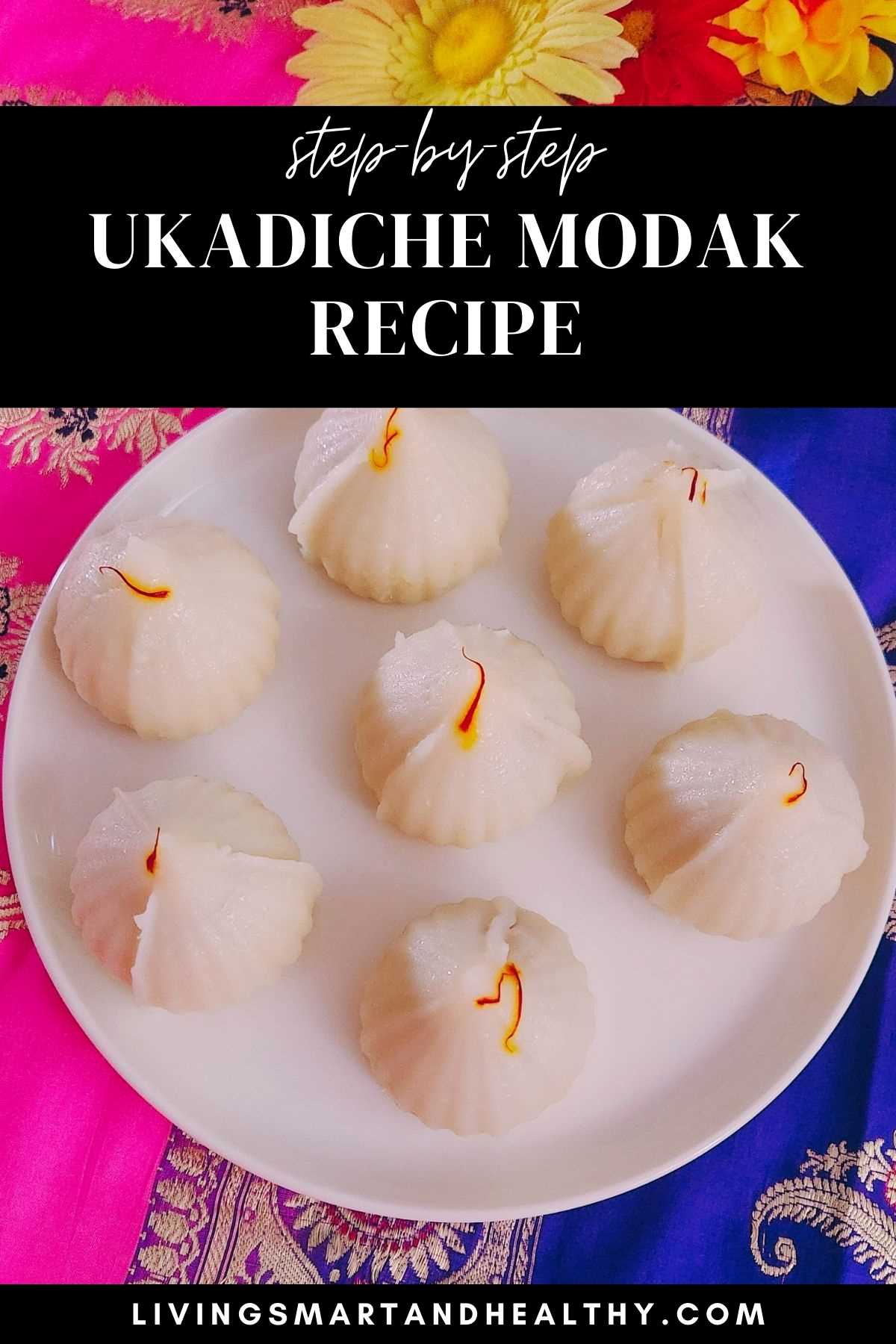
Variations of Modak
There are variations of modak with different fillings and preparation methods. Some common variations include:
Ukadiche Modak: These are steamed modaks made with rice flour dough and a coconut, jaggery filling. They are often garnished with ghee (clarified butter) and cardamom powder.
Fried Modak: Instead of steaming, these modaks are deep-fried to achieve a crispy outer layer.
Chocolate Modak: A modern twist on the traditional modak, these are made by adding cocoa powder or melted chocolate to the filling for a chocolatey flavor.
Dry Fruit Modak: Chopped nuts and dried fruits like almonds, cashews, and raisins are added to the coconut-jaggery mixture for added texture and richness.
Alternate Names Of Modak
Modak is primarily known as "modak" in most regions of India, but it may have different names or regional variations in various Indian languages and dialects.
Some of the alternate names for modak include "kozhukattai" in South India, "kudumu" in Telugu-speaking regions, "modaka" in Sanskrit, "ukdiche modak" in Maharashtra, "siu mai" or "shu mai" in parts of the Northeast, and "kadubu" in Karnataka.
These regional names reflect the diversity of India's culinary traditions, with variations in ingredients and preparation methods for this beloved sweet dumpling.
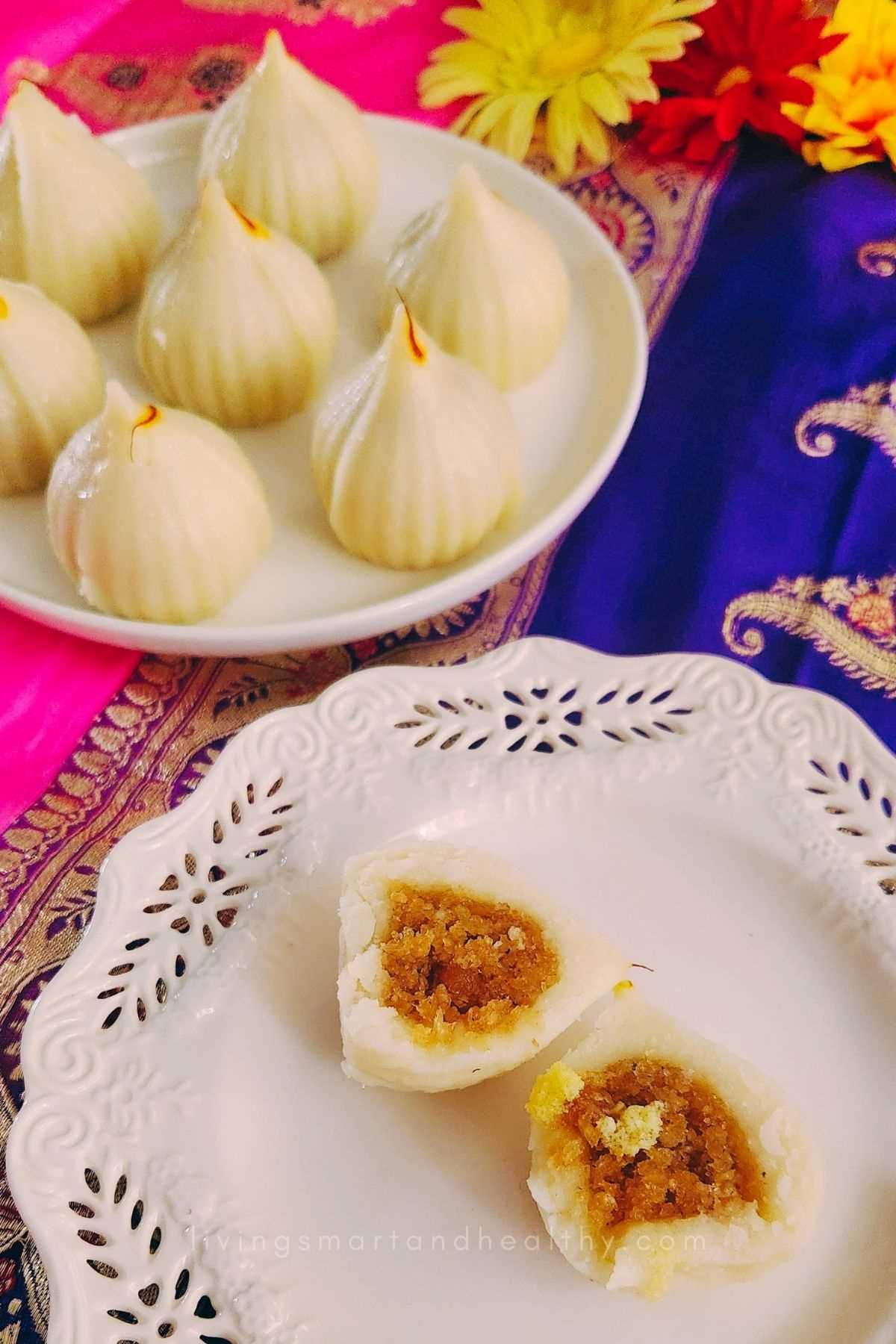
Ingredients For Modak Recipe
Here's a description of the ingredients used in making recipe for modak:
For the Outer Covering:
Rice Flour: Rice flour is the primary ingredient for the outer covering of modak. It is known for its smooth texture, making it suitable for shaping the modak.
Water: Water is used to make a dough with rice flour. It helps bind the flour and create a pliable dough that can be shaped.
Salt: A pinch of salt is added to the rice flour dough for flavor enhancement. It provides a subtle balance to the sweetness of the filling.
Ghee (Clarified Butter): Ghee is used in the dough to enhance the flavor and provide a slightly rich and aromatic taste to the modak. It also prevents the dough from becoming too dry.
For the Filling:
Grated Coconut: Freshly grated coconut is a key ingredient for the recipe for modak filling. It adds a delightful, natural sweetness and a pleasant coconut flavor to the filling.
Jaggery: Jaggery is used to sweeten the filling and gives it a distinct caramel-like flavor. Jaggery is a common sweetener in traditional Indian sweets.
Cardamom Powder: It adds a delightful aroma and flavor to the filling. It complements the sweetness of the jaggery and coconut.
Salt: A pinch of salt is added to balance the sweetness and enhance the overall flavor of the filling.
These ingredients come together to create the unique and delicious combination of flavors and textures that make recipe for modak a beloved Indian sweet, especially during festivals like Ganesh Chaturthi.
The outer covering provides a soft and slightly chewy texture, while the sweet coconut, jaggery filling offers a blend of sweet, nutty, and aromatic flavors.
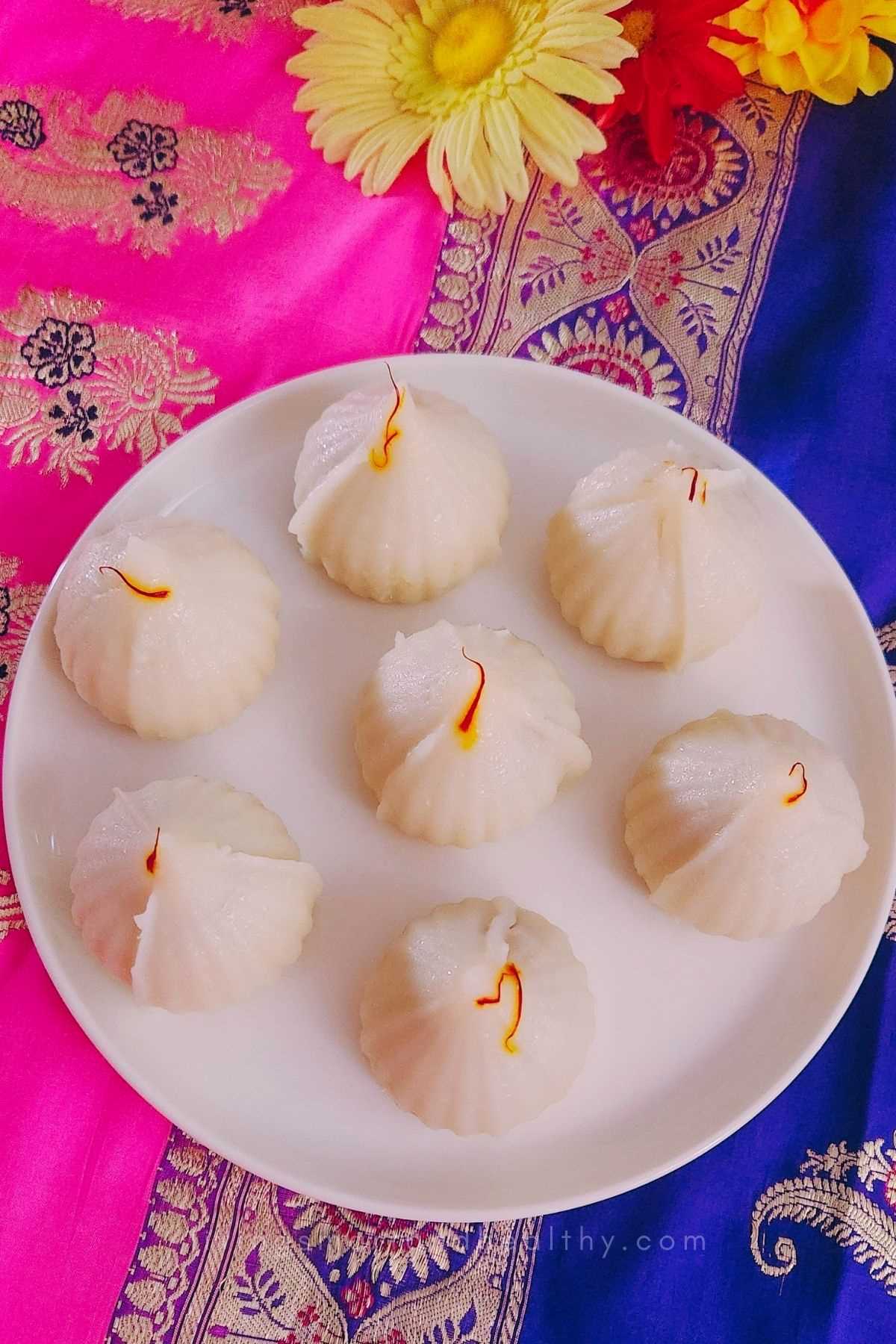
How To Make Ukadachi Modak
You can make recipe for modak with or without a mould by shaping them by hand. Here's a recipe for traditional steamed modak with or without using a mould:
Prepare the Filling
Heat a pan on low-medium heat and add the grated coconut.
Stir the coconut for a few minutes until it turns slightly dry and aromatic.
Add the jaggery to the coconut and continue to cook, stirring constantly, until the jaggery melts and combines with the coconut to form a soft mixture. This may take about 5-7 minutes.
Add the cardamom powder and a pinch of salt. Mix well and remove the mixture from the heat. Allow it to cool to room temperature.
Make the Dough
In a separate saucepan, bring 1 cup of water to a boil. Add a pinch of salt and 1 teaspoon of ghee.
Reduce the heat to low and slowly add the rice flour while continuously stirring to avoid lumps.
Stir the mixture until it forms a dough-like consistency and leaves the sides of the pan. Remove it from the heat and let it cool slightly.
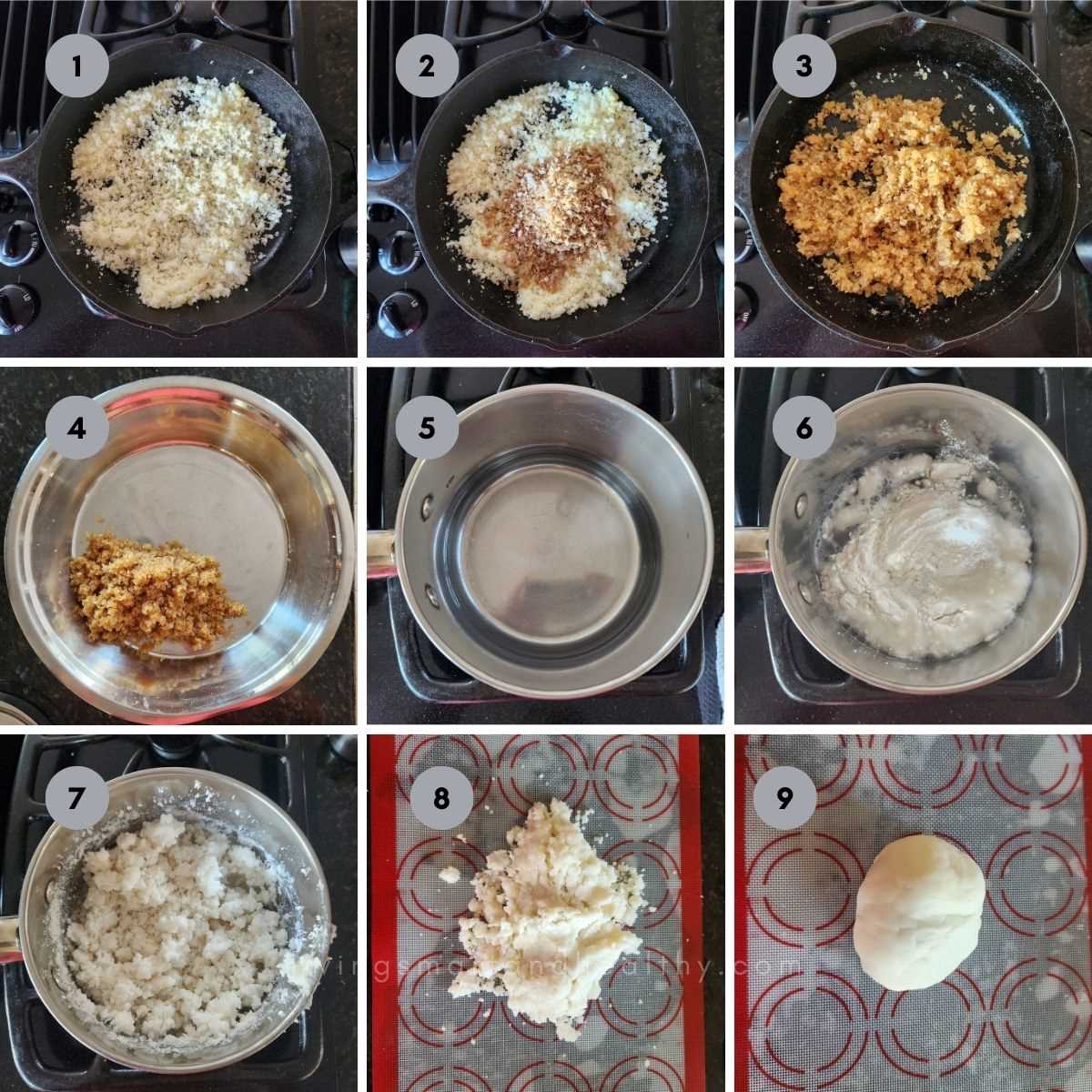
Shape the Modak Without Mould
Take a small portion of the rice flour dough and roll it into a smooth ball.
Flatten the ball into a small disc on your palm or on a clean, moist cloth. The disc should be about 3-4 inches in diameter.
Place a spoonful of the coconut-jaggery filling in the center of the disc.
Carefully gather the edges of the disc to form pleats and bring them together at the top.
Pinch and seal the top to create a pyramid-like shape. Make sure the modak is sealed well so that it doesn't open during steaming.
Repeat this process for the remaining dough and filling.
Shape the Modak With Mould
Here's how to make modak with a mould. I have used this mould from Amazon.
Grease the modak mould with a little ghee to prevent sticking. Take a small portion of the rice flour dough and roll it into a smooth ball.
Flatten the ball slightly and place it in the greased mould. Press it gently to create a cavity in the center.
Place a spoonful of the coconut-jaggery filling into the cavity in the rice flour dough.
Take a small piece of the rice flour dough and use it to cover the filling. Press the edges to seal the modak.
Gently tap the mould to release the modak.
Repeat this process for the remaining dough and filling.
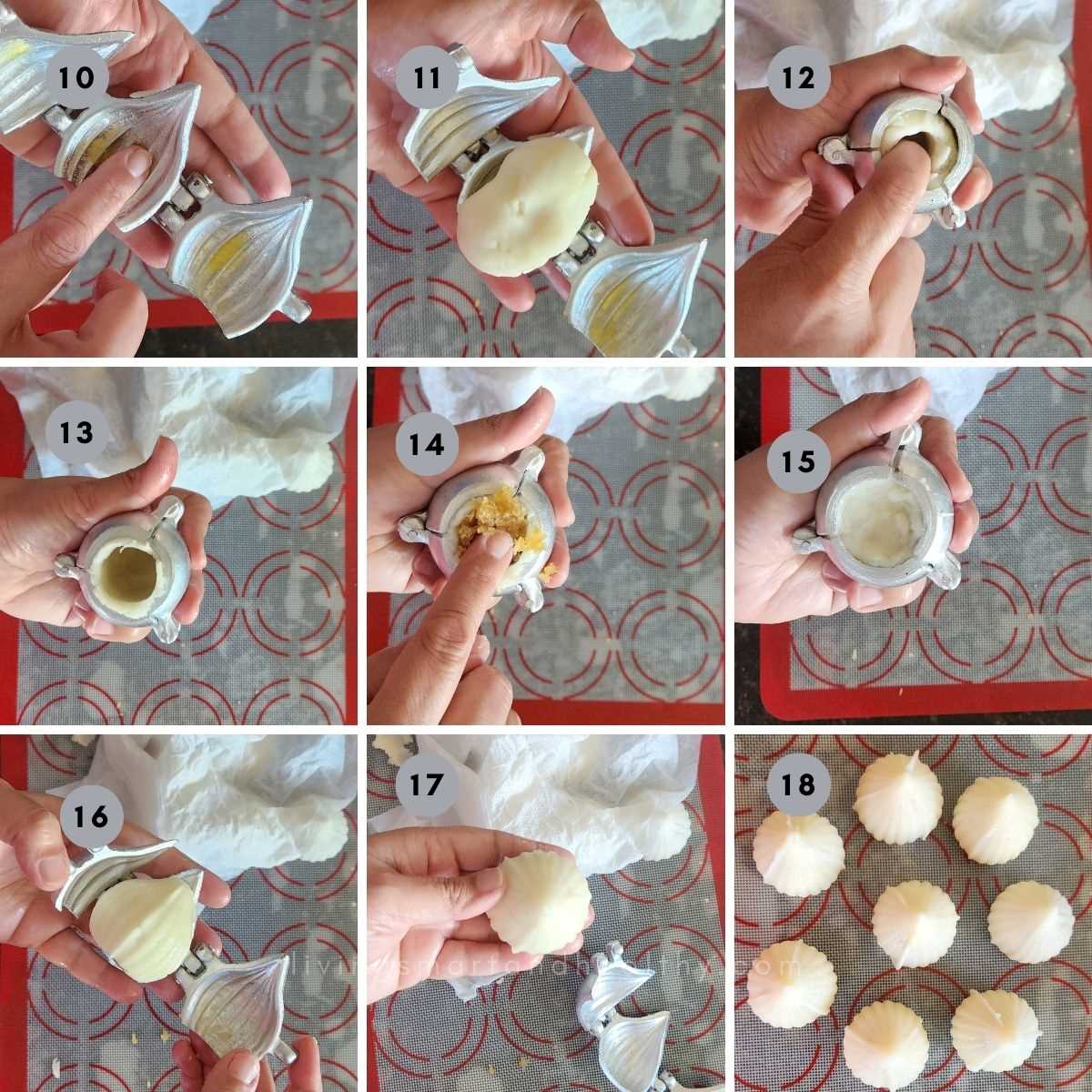
Steam the Modak
Grease a steamer plate or idli stand with a little ghee or oil to prevent sticking.
Place the modaks in the steamer, leaving some space between them. Steam the modaks for about 10-12 minutes or until they become slightly glossy and firm.
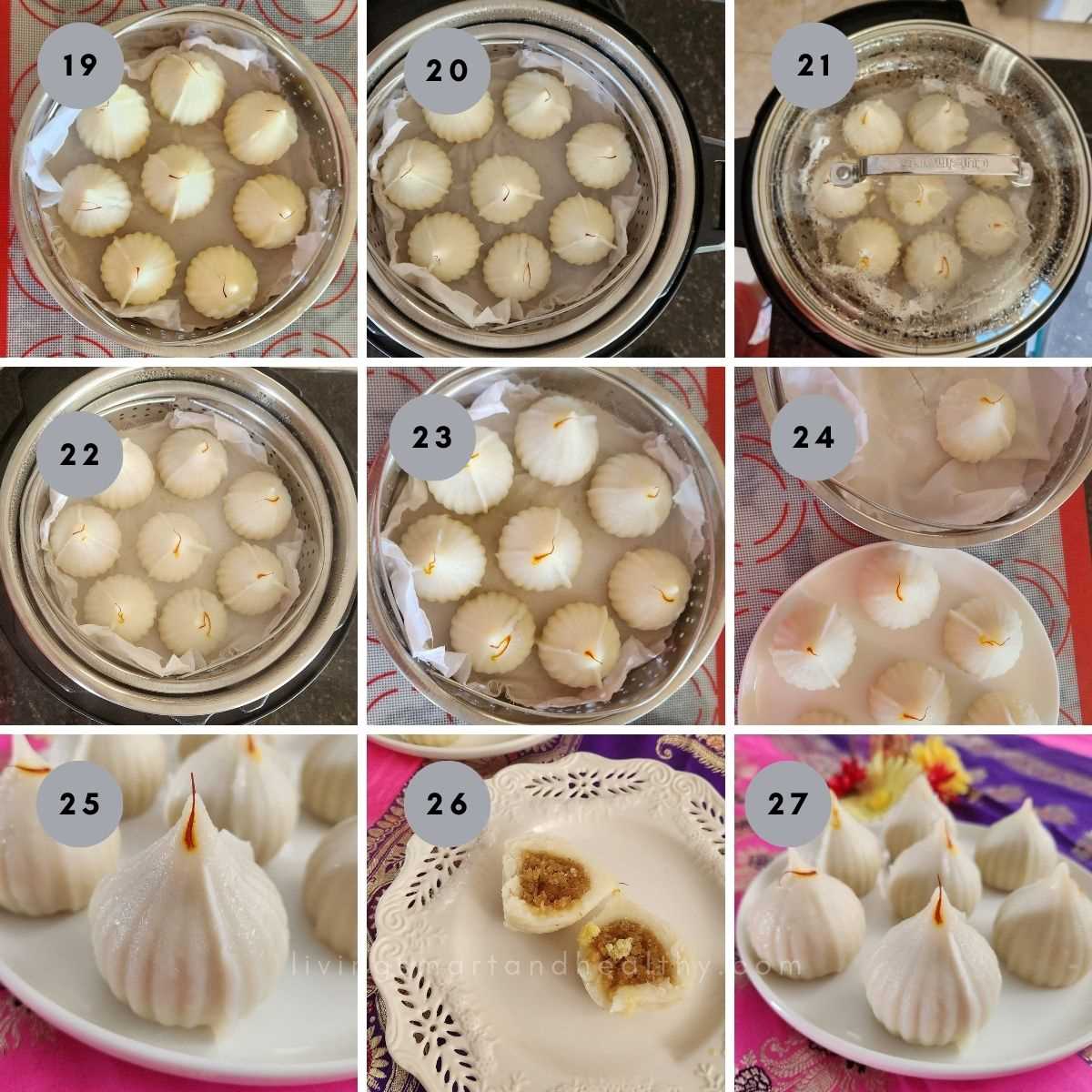
Serve
Allow the modaks to cool for a few minutes before removing them from the steamer.
Offer them as prasad or enjoy them as a sweet treat.
These hand-shaped modaks are not only delicious but also have a unique homemade charm.
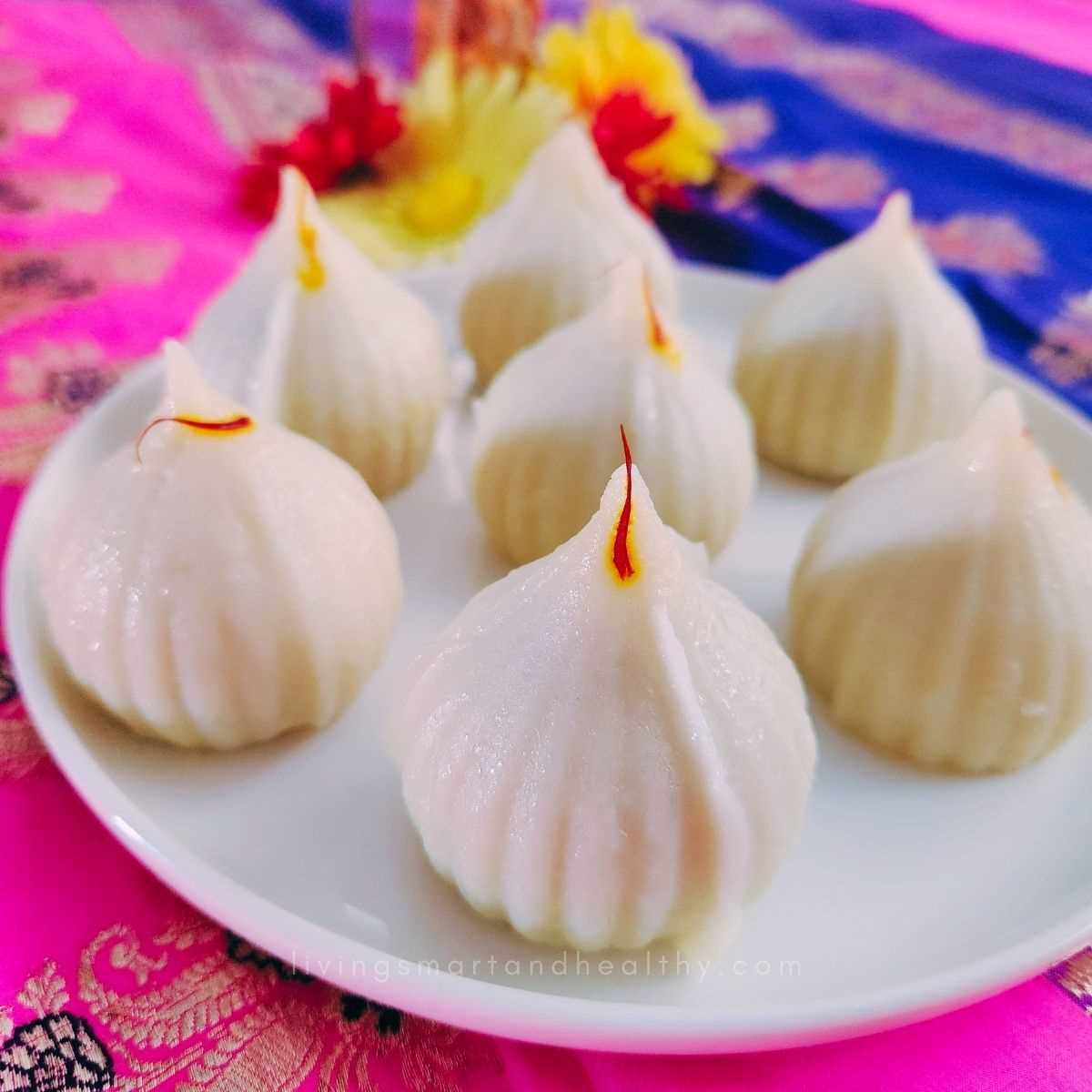
Storage
Store modakam recipe in an airtight container at room temperature for up to 2-3 days. If you want to keep them fresh for a longer period, refrigerate them for up to a week, but be sure to warm them slightly before serving to restore their softness and flavor.
Tips
Here are some tips to help you make delicious modakam recipe:
Consistent Dough: Ensure that the rice flour dough is of the right consistency - neither too dry nor too wet. It should be pliable enough to shape without cracking.
Keep the Dough Covered: While working with the dough, cover it with a damp cloth or plastic wrap to prevent it from drying out.
Even Filling: Distribute the coconut-jaggery filling evenly among the modaks to ensure each one has a consistent taste.
Sealing Well: When shaping the recipe for modaks, make sure they are sealed tightly to prevent the filling from leaking during steaming.
Steam Carefully: Steam the modaks on medium heat to ensure even cooking. Overcooking can make them tough while undercooking can leave the rice flour raw.
Grease Moulds: If using molds, grease them lightly with ghee or oil before placing the dough to prevent sticking.
Flatten Dough Evenly: When using molds, ensure that the rice flour dough is evenly distributed and flattened within the mold to create a uniform shape.
Serve Warm: Modak tastes best when served warm. If they cool down, you can gently reheat them in a steamer or microwave for a few seconds before serving.
Storage: Store modakam recipe in an airtight container to prevent them from drying out, especially if you're not consuming them immediately.
Following these tips will help you make recipe for modak that are not only visually appealing but also incredibly tasty.
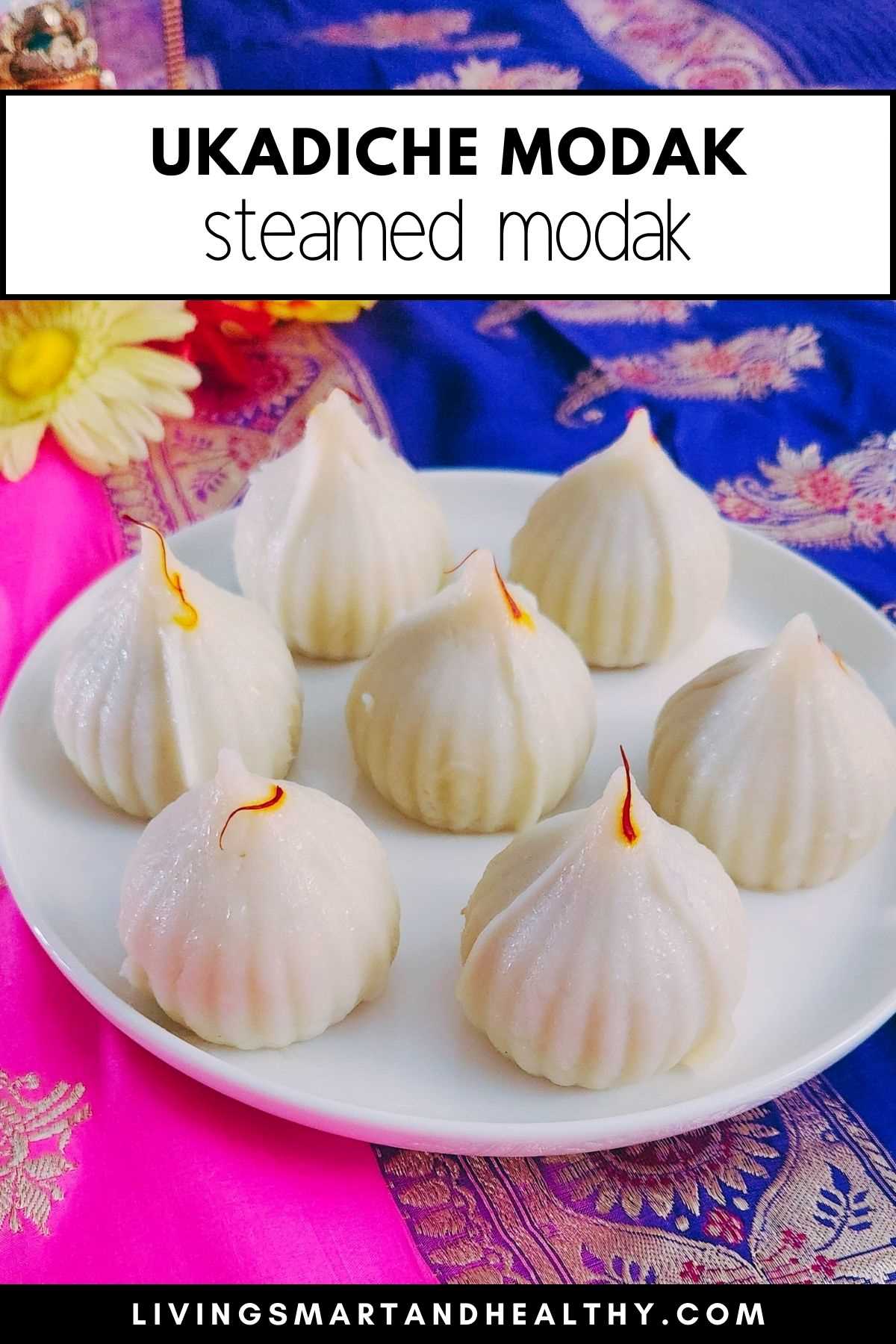
FAQ's
Traditional modak is made of a rice flour dough that is filled with a mixture of grated coconut and jaggery (unrefined cane sugar), often flavored with cardamom powder and shaped into dumplings before steaming or frying.
In Hinduism, modak is a sweet dumpling considered a favorite offering to Lord Ganesha, the deity of wisdom and prosperity, often prepared during the festival of Ganesh Chaturthi. Modak symbolizes the sweetness of life and the reward of devotion.
Modak is traditionally consumed during Hindu festivals, with Ganesh Chaturthi being the most significant occasion. It's typically offered as prasad (a sacred offering) to Lord Ganesha and shared with family and friends as a symbol of blessings and joy during the festival.
Modak is considered a favored offering to Lord Ganesha because it is believed to be his favorite sweet. It is offered to seek his blessings and win his favor, as Ganesha is revered as the remover of obstacles and the provider of prosperity and wisdom in Hinduism.
Indian Sweets
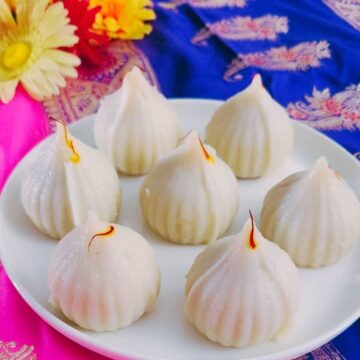
Ukadiche Modak | Modak Recipe (With & Without Mould)
Equipment
Ingredients
For the Outer Covering:
- 1 cup rice flour
- 1 cup water
- pinch salt
- 1 teaspoon ghee (clarified butter)
For the Filling:
- 1 cup grated coconut
- ½ cup jaggery, crushed or grated
- ½ teaspoon cardamom powder
- pinch nutmeg, freshly grated
- pinch salt
Instructions
Prepare the Filling
- Heat a pan on low-medium heat and add the grated coconut.
- Stir the coconut for a few minutes until it turns slightly dry and aromatic.
- Add the jaggery to the coconut and continue to cook, stirring constantly, until the jaggery melts and combines with the coconut to form a soft mixture. This may take about 5-7 minutes.
- Add the cardamom powder, nutmeg, and a pinch of salt. Mix well and remove the mixture from the heat. Allow it to cool to room temperature.
Make the Dough
- In a separate saucepan, bring 1 cup of water to a boil. Add a pinch of salt and 1 teaspoon of ghee.
- Reduce the heat to low and slowly add the rice flour while continuously stirring to avoid lumps.
- Stir the mixture until it forms a dough-like consistency and leaves the sides of the pan. Remove it from the heat and let it cool slightly.
- Once the dough is slightly cool, knead the dough again. Divide the dough into 12 equal portions, and roll each portion into a smooth lemon-size ball. Cover the dough balls with a damp cloth.
Shape the Modak Without Mould
- Take one portion of the rice flour dough.
- Flatten the ball into a small disc on your palm or on a clean, moist cloth. The disc should be about 3-4 inches in diameter.
- Place a spoonful of the coconut-jaggery filling in the center of the disc.
- Carefully gather the edges of the disc to form pleats and bring them together at the top.
- Pinch and seal the top to create a pyramid-like shape. Make sure the modak is sealed well so that it doesn't open during steaming.
- Repeat this process for the remaining dough and filling.
Shape the Modak With Mould
- Grease the modak mould with a little ghee to prevent sticking. Take one portion of the rice flour dough.
- Flatten the ball slightly and place it in the greased mould. Press it gently to create a cavity in the center.
- Place a spoonful of the coconut-jaggery filling into the cavity in the rice flour dough.
- Take a small piece of the rice flour dough and use it to cover the filling. Press the edges to seal the modak.
- Gently tap the mould to release the modak.
- Repeat this process for the remaining dough and filling.
Steam the Modak
- Grease a steamer plate or idli stand with a little ghee or oil to prevent sticking.Note: You can also line the steamer with a damp cotton cloth or muslin cloth.
- Place the modaks in the steamer, leaving some space between them. Steam the modaks for about 10-12 minutes on low heat or until they become slightly glossy and firm.
Serve
- Allow the modaks to cool for a few minutes before removing them from the steamer.
- Offer them as prasad or enjoy them as a sweet treat.
Notes
- Tips For Best Modak Recipe
- FAQ's
Nutrition
Disclaimer
Nutrition values are my best estimates. If you rely on them for your diet, use your preferred nutrition calculator.

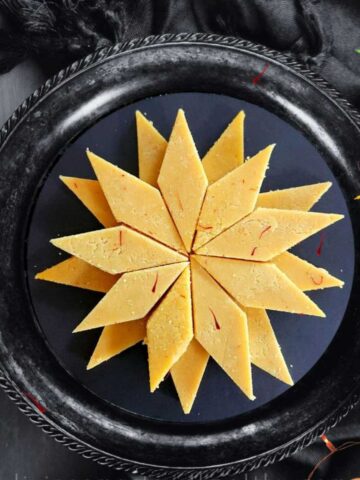
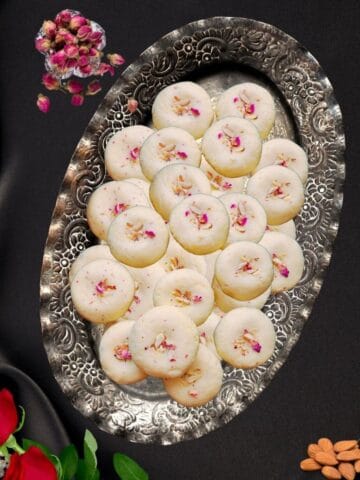
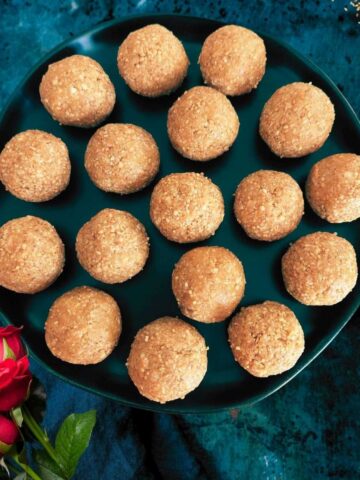
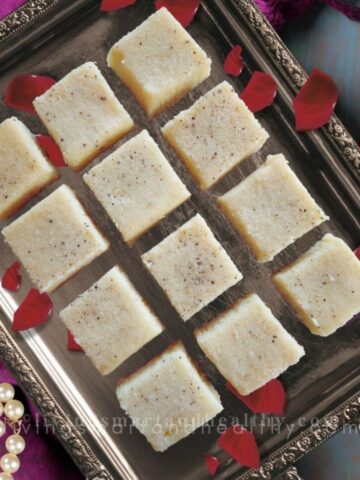
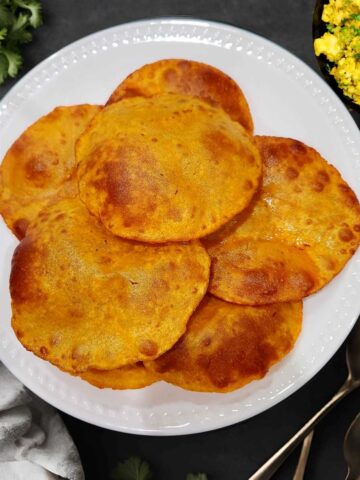
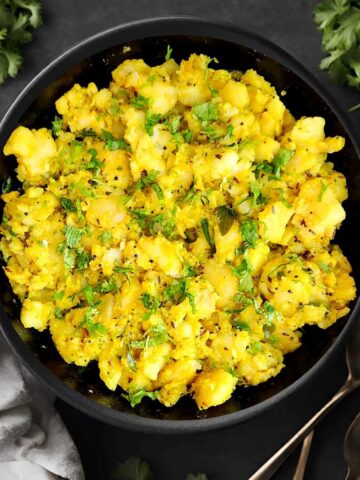
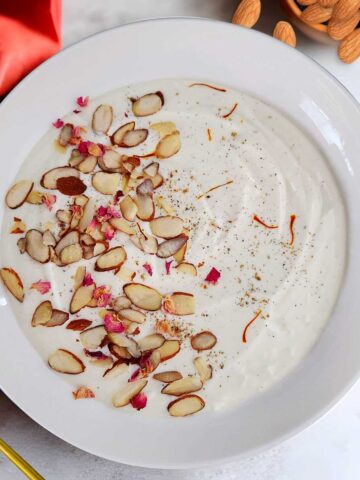
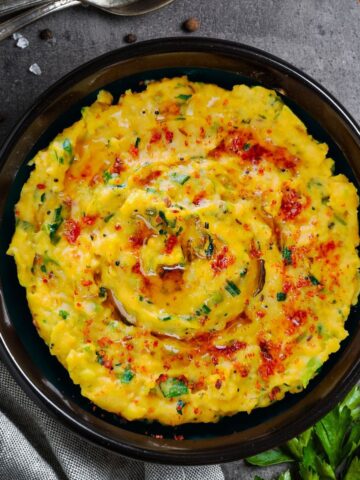
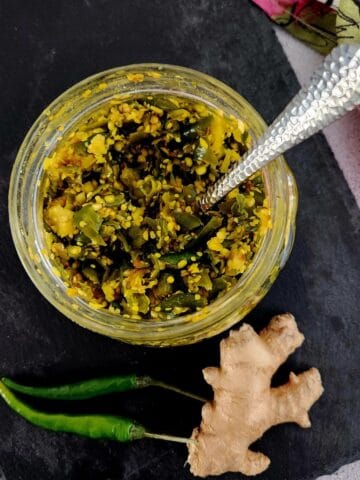
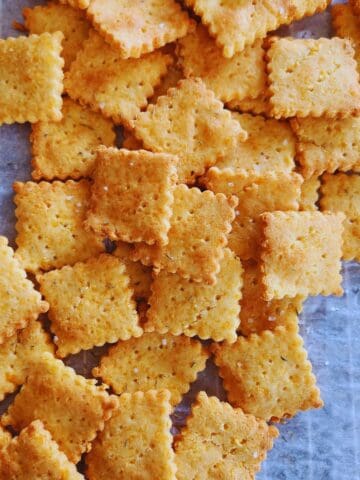

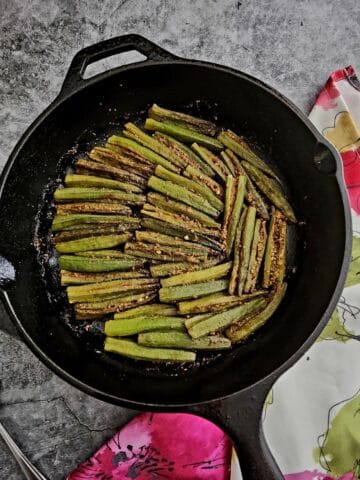
Leave a Reply
You must be logged in to post a comment.